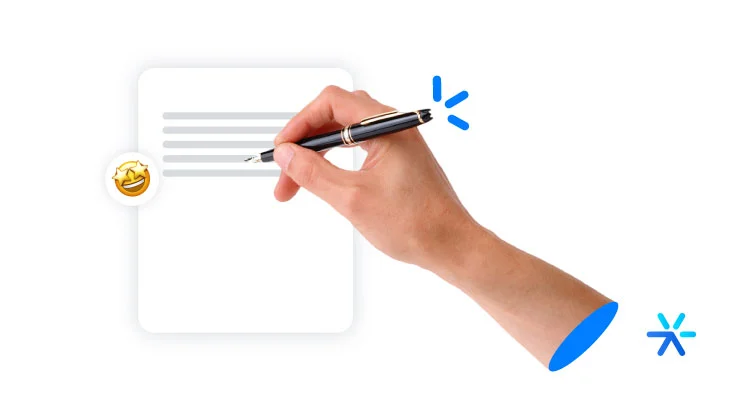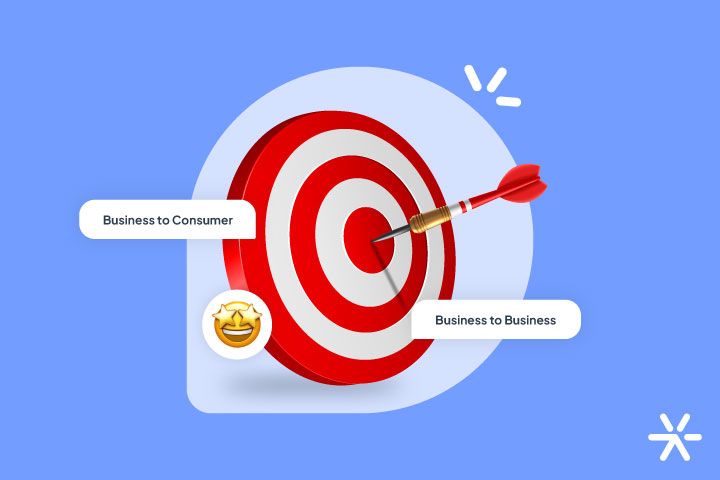Sales Objection Matrix: What It Is and How to Build One
If you work as a sales representative or sales manager, you are used to dealing with prospects’ objections regarding the purchase.
In this context, the objection matrix becomes an essential tool in the sales process.
In this article, you will find what objections are, the main types, why and how objections arise during the sales process, and how to build an objection matrix that solves the problems presented by the consumer.
What are Objections?

A sales objection is a consideration, question, or obstacle raised by the consumer who is in contact with the sales team, regarding the proposal being offered.
This obstacle needs to be overcome by the sales representative to move the negotiation forward.
You might like: Increase Your Sales and Leads Conversion Rate: 9 Practical Tips
What are the Types of Objections?
Sales objections vary according to the consumer’s profile, the stage of the buying process, and the fit with the offered solution.
Here are the main types:
Misconception
If a lead raises a misconception objection, it means there was some failure either in the process of educating this contact before the sales approach or that the approach is happening at the wrong time.
This type of objection shows that the lead does not understand what your solution is about.
This can cause problems after the purchase, since if the lead buys something they don’t fully understand, they may become frustrated.
With this kind of objection, the sales representative first needs to explain and clear all doubts about the solution, including sending support materials, before continuing the sales process.
Read: Lead Nurturing: What It Is and How to Do It
Skepticism
Skepticism objections relate to insecurity and distrust.
In these cases, the lead has not yet bought into the idea and the benefits the solution delivers, or may be “holding back” regarding your company.
The sales representative can explore case studies and testimonials from clients already using the product or service, especially contextualizing these arguments in the lead’s scenario.
It is these real results that help overcome this type of objection.
Learn more: Social Proof: What It Is, How It Works, and Why It’s Important
Real Problem
Real problems are related to issues such as price, functionalities, or better deals with competitors.
Here, it is worth exploring your brand’s competitive advantages and also understanding when the objection is genuinely an obstacle to the purchase being completed.
Real Complaint
A real complaint objection happens when the lead has already had a bad experience with the brand.
Imagine this scenario: you contact a lead, apparently qualified and a former customer, to offer a new product.
But this former client has actually had several problems and complaints.
Without this history on hand, you cannot make an approach adapted to the consumer’s reality, and the chances of failing are very high.
That’s why having the history at hand is so important, to prepare the communication in the best way.
Deal Breaker
This type of negotiation usually ends the commercial negotiation.
These include lack of purchasing power, wrong timing, or some other important fit that does not match.
It is important that the sales representative has the maturity to understand this type of objection and gives up on a negotiation that will only waste time.
Also read: 9 Mental Triggers for Sales That Still Work in 2022

Why is it Important to Know how to Handle Objections?
Among the skills that separate good sellers from great sellers is the ability to overcome sales objections.
Knowing how to listen, understand your contact’s profile, and use the right argumentation makes the seller’s work stand out, helps leads move through the funnel, and increases the number of closed business opportunities.
Why and how do Objections Arise in the Sales Process?

Sales objections are part of the commercial process because the consumer needs to feel comfortable that they are making the best choice and will be satisfied after the purchase.
Creating a matrix is what ensures that sales objections are properly addressed, new representatives are trained, and clients are more satisfied with the process.
Check out: Marketing and Sales: How to Unite Strategies and Achieve Goals
What is an Objection Matrix?
The objection matrix is a visual tool that assists in the sales process.
It is a way to map the main objections presented by your brand’s leads, understand what these objections really mean, and organize how salespeople should act when each issue arises.
Source: Reev
How to Build an Objection Matrix?

The objection matrix can be created visually, in a spreadsheet, or in some sales software that offers this feature.
To build your own objection matrix, facilitate the sales team’s work, and improve the company’s financial results, follow these steps:
Map the Types of Objections you Face
The first step is to understand what types of objections are presented by the leads you and your team approach.
This will help you find patterns.
Describe the Objection in a Sentence
Objections, even when related to the same problem raised by leads, may appear in different ways.
To help the seller, write a phrase in the matrix that represents each type of rejection.
For example, a real problem objection related to purchasing power may be “I don’t have the money.”
Classify the Objection According to the Types Identified Above
Remember the objection types?
Each contact should also be classified among the types presented.
This will enrich the lead’s history and help the seller access all the data and objections raised in future approaches.
Explain the Reason for this Objection
The more details about each approach, the better.
So, we recommend including explanations of why and how these objections appeared, as this may help with future insights and analyses.
At What Point in the Sales Process did the Objection Arise
The timing of the objection’s appearance in the conversation is also worth noting in the matrix, so the seller can anticipate and prepare for the next step.
How to Overcome These Objections
You will also include — and this is one of the most important steps — how the sales representative should overcome each of these types of objections.
Preferably, you can create a step-by-step guide or even a flowchart with different paths, depending on how the lead reacts to each seller argument.
Describe the Stages of your Process
With these previous steps in hand, you will be able to describe all stages of the sales process, all necessary approaches, and the objections related to each of them.
Use visual tools so salespeople can anticipate and understand the motivations, timings when objections usually appear, and the paths they can take.
Write your Speech to Overcome these Objections
More detailed explanations and investigations are important, but during the sales approach, the seller needs a quick guide to overcome objections.
So, include in the matrix how they should build their argumentation to overcome objections and continue communication with that business opportunity.
Conclusion
Do you feel more prepared to create your objection matrix and improve your team’s work?
Sales objections are part of this work, but with preparation, techniques, and standardization, overcoming them will be much easier!
Continue your reading and make your matrix even better with the article: “Sales Objections That Make Every Seller Nervous — And How to Overcome Them.”








